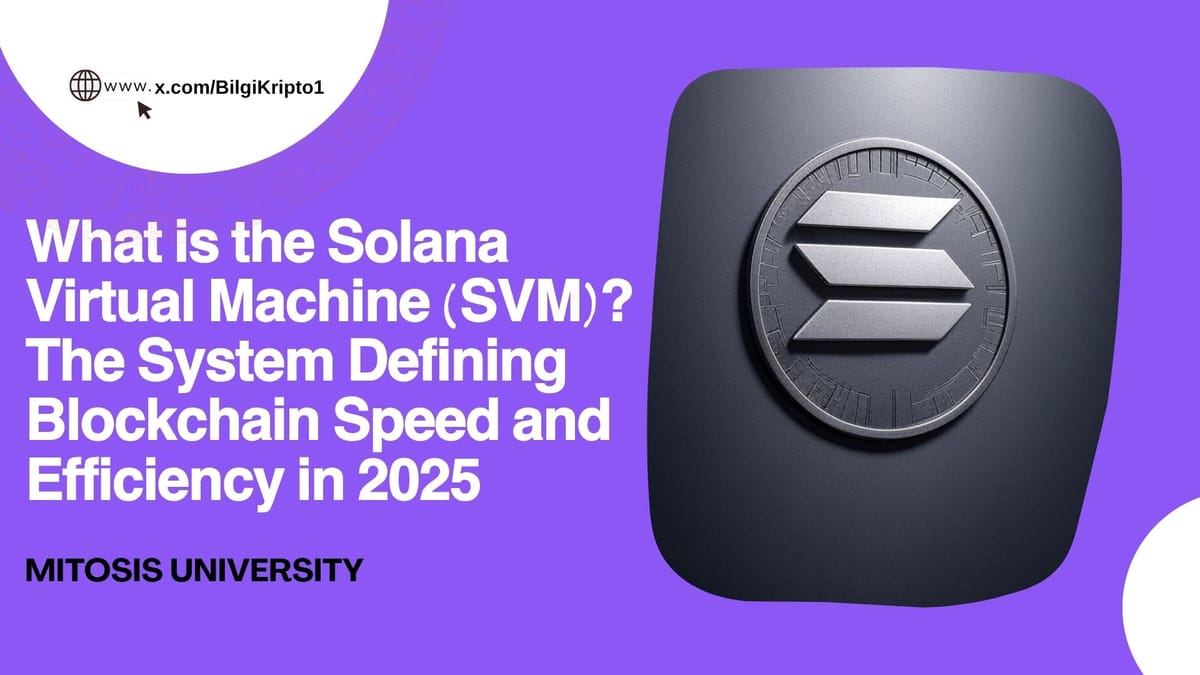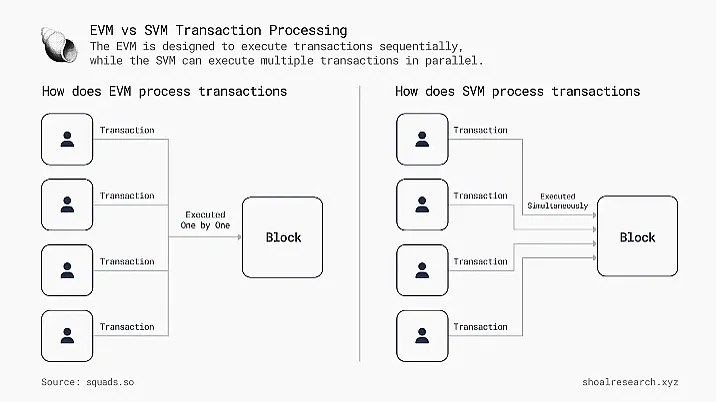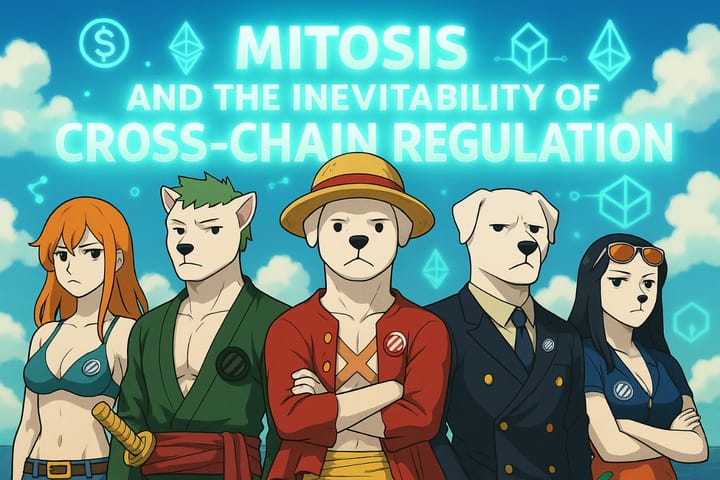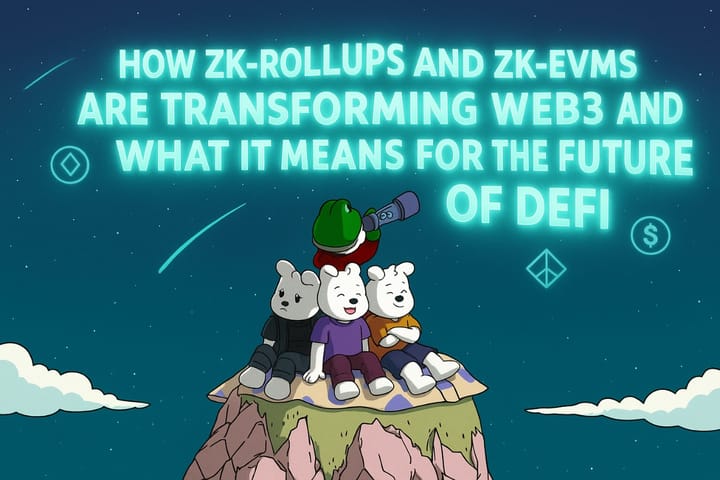What is the Solana Virtual Machine (SVM)? The System Defining Blockchain Speed and Efficiency in 2025

In 2025, decentralized applications (dApps), NFT marketplaces, and DeFi protocols are serving millions of users around the globe. In this new digital world, hundreds of thousands of transactions are processed every second. One of the core systems that make such a large volume of transactions possible is the Solana Virtual Machine (SVM).
So, what exactly is SVM? How does it work? And how does it differ from the Ethereum Virtual Machine (EVM)? Let’s explain all of this in simple and clear terms.
What is SVM? The Simplest Explanation
SVM (Solana Virtual Machine) is a virtual computer that runs smart contracts on the Solana blockchain. This virtual machine processes, verifies, and applies the results of transactions sent by users across the network.
Let’s explain with an example:
Imagine you're using an NFT marketplace and want to purchase a digital artwork. During the purchase, a smart contract running in the background checks if you've made the payment and whether the seller has transferred the NFT to you. The infrastructure managing this process is the SVM.
SVM is one of the most critical components enabling Solana to deliver high transaction throughput (TPS). Unlike other blockchains such as Ethereum, which process transactions sequentially, SVM can execute transactions simultaneously (in parallel). This means greater speed and efficiency.

How Does SVM Work? Step-by-Step Overview
To better understand how SVM operates behind the scenes, consider the following steps:
Validators take action
The Solana network operates through globally distributed nodes. Each node runs the SVM and processes incoming transactions.
Preparing the smart contract
The transaction sent by the user is first translated into a language that computers can understand. This process is called compiling the code.
Executing the contract
The compiled contract is executed through the SVM, carrying out actions such as token transfers or NFT sales.
Updating data
As a result of the transaction, records on the blockchain are updated. Ownership, balances, and other data are changed accordingly.
Reaching consensus
Other validators verify the transaction and write it to the blockchain after reaching consensus.
Although this process happens in seconds from a user’s perspective, a highly complex system is working in the background.
What is SeaLevel? The Feature that Sets SVM Apart
The most unique component that sets the Solana Virtual Machine apart is SeaLevel. So, what is it exactly?
SeaLevel enables the parallel execution of multiple transactions at the same time.
Explained with an Example:
- User A sends SOL tokens to their wallet.
- User B purchases an NFT.
- User C records their game score on the blockchain.
Since these transactions are independent of each other, SVM can process all three at the same time (in the same second). If it were a sequential system like Ethereum, these would be processed one after another, increasing wait times.
However, note: if two users are interacting with the same wallet, such as one sending and the other withdrawing funds, a conflict could occur. SeaLevel intelligently detects these conflicts and switches to sequential processing when needed.

Comparison: SVM vs EVM
| Feature | SVM (Solana) | EVM (Ethereum) |
|---|---|---|
| Transaction Model | Parallel processing | Sequential processing |
| Programming Language | Rust | Solidity |
| TPS (Transactions/Second) | 65,000+ | Around 15–30 |
| Developer Friendliness | More technical, high performance | Broad community, easier to learn |
| Smart Contract Execution | Each node runs independently | All nodes reach consensus |
Although using Rust enhances performance, it might be harder to learn at first for new developers. However, the speed and security it offers easily compensate for that.
Real-World Use Cases of SVM
1. NFT Marketplaces
Popular platforms like Magic Eden operate on Solana. Every NFT transaction is processed by SVM.
2. Blockchain Games
Many growing Web3 games in 2025 are being developed on Solana. Players’ scores, earned rewards, and owned items are all recorded directly through SVM.
3. DeFi Protocols
Liquidity pools, staking systems, and lending platforms on Solana use SVM to execute their transactions.
Challenges and Limitations of SVM
No technology is flawless. While SVM has many strengths, it also faces a few challenges:
Managing parallel transactions is difficult
If multiple transactions affect the same data, conflicts can arise if not properly handled.
Rust is harder to learn
Compared to Solidity, Rust has a steeper learning curve, especially for developers new to blockchain development.
Fewer developers
While Ethereum has a large and well-established developer community, Solana is still in the process of reaching the same level of adoption.
Future Outlook: Where is SVM Heading?
As of 2025, Solana is gaining more attention in areas such as artificial intelligence, gaming, DeFi, and the tokenization of real-world assets (RWA). SVM sits at the center of these advancements.
- High speed and low cost make it attractive for both developers and users.
- Parallel processing architecture helps prevent network congestion.
- A growing ecosystem opens new opportunities and innovation paths.
Conclusion: SVM Could Be the Blockchain Engine of the Future
The Solana Virtual Machine delivers clear answers to 2025's demand for speed, efficiency, and low-cost infrastructure. It offers an ideal foundation, especially for projects with large user bases.
For developers looking to start a new project or tech enthusiasts eager to explore, learning SVM can offer a significant advantage in the coming years. Because the future of blockchain isn’t just secureit ’s also fast, smart, and built to scale


Comments ()